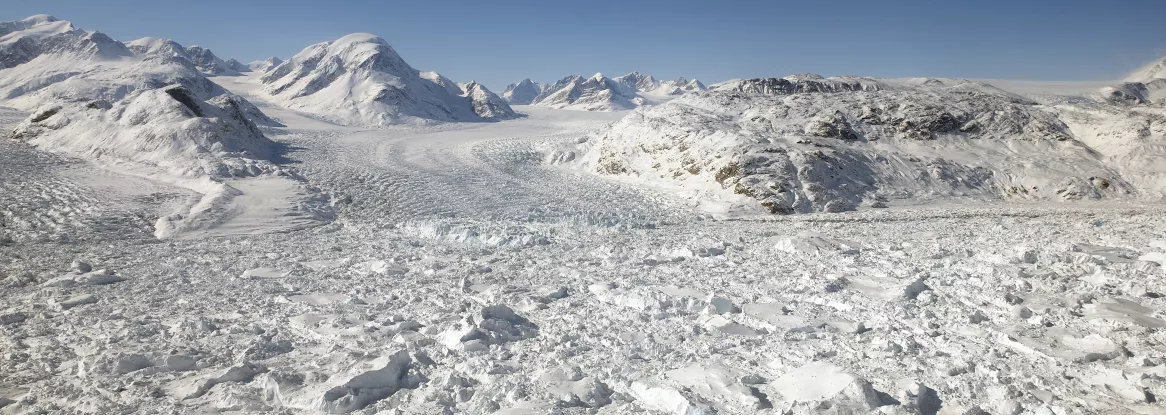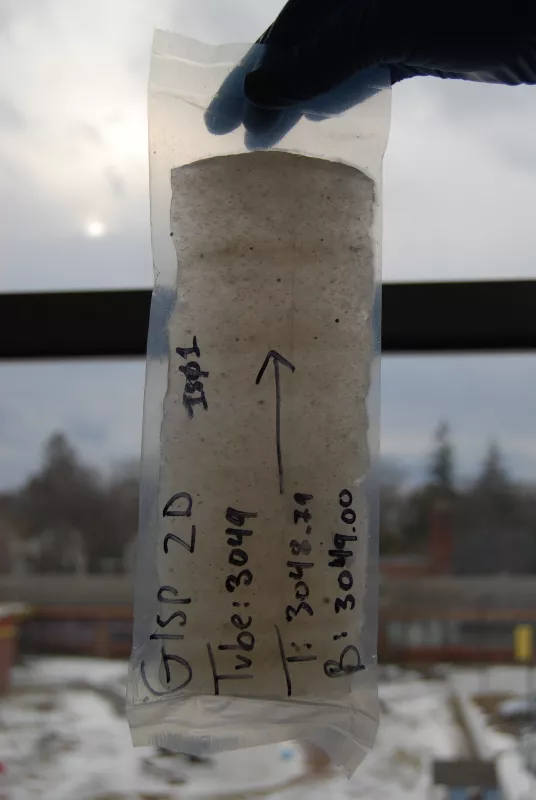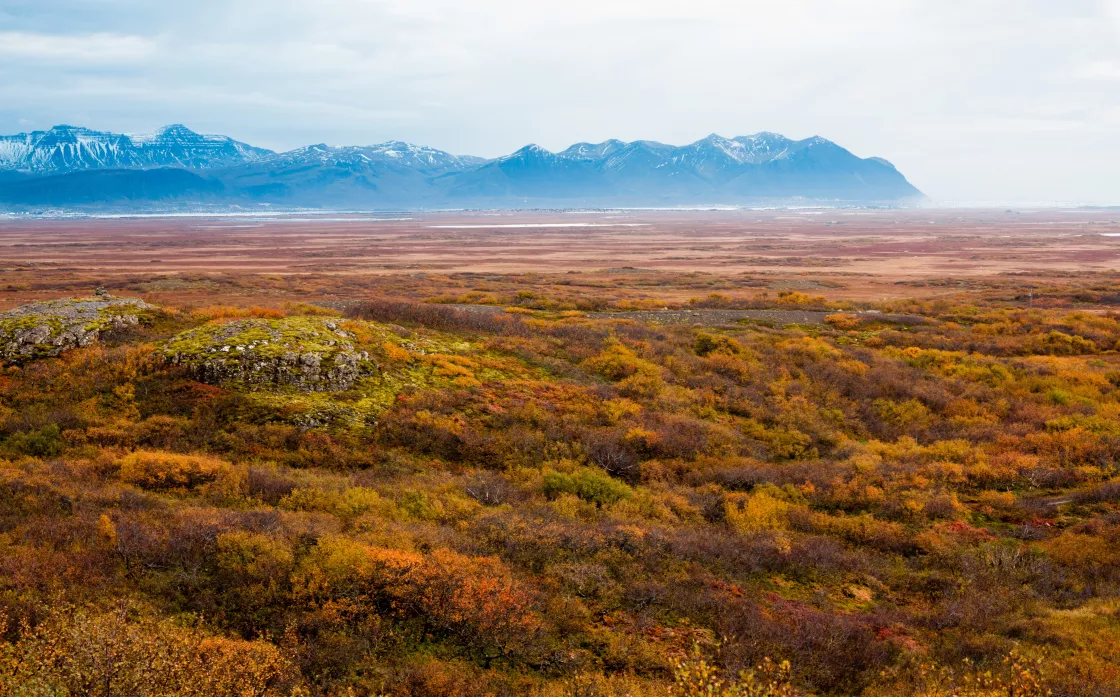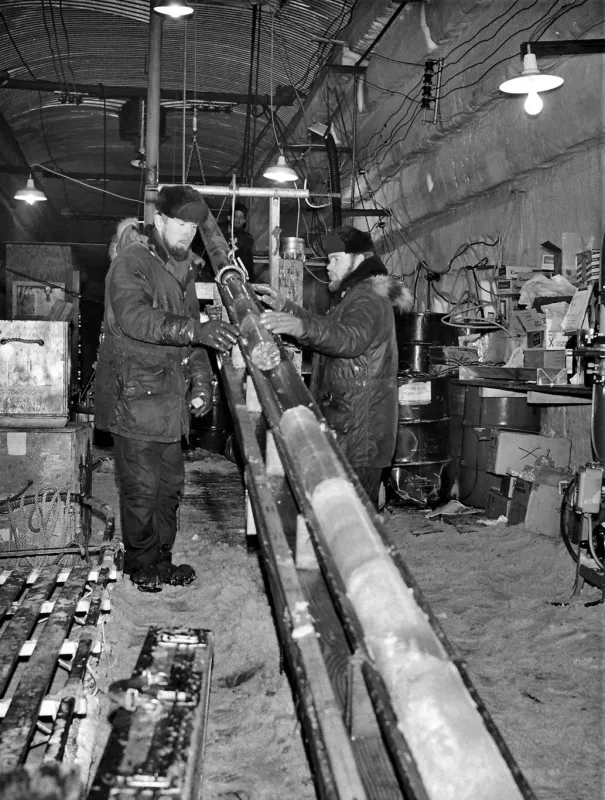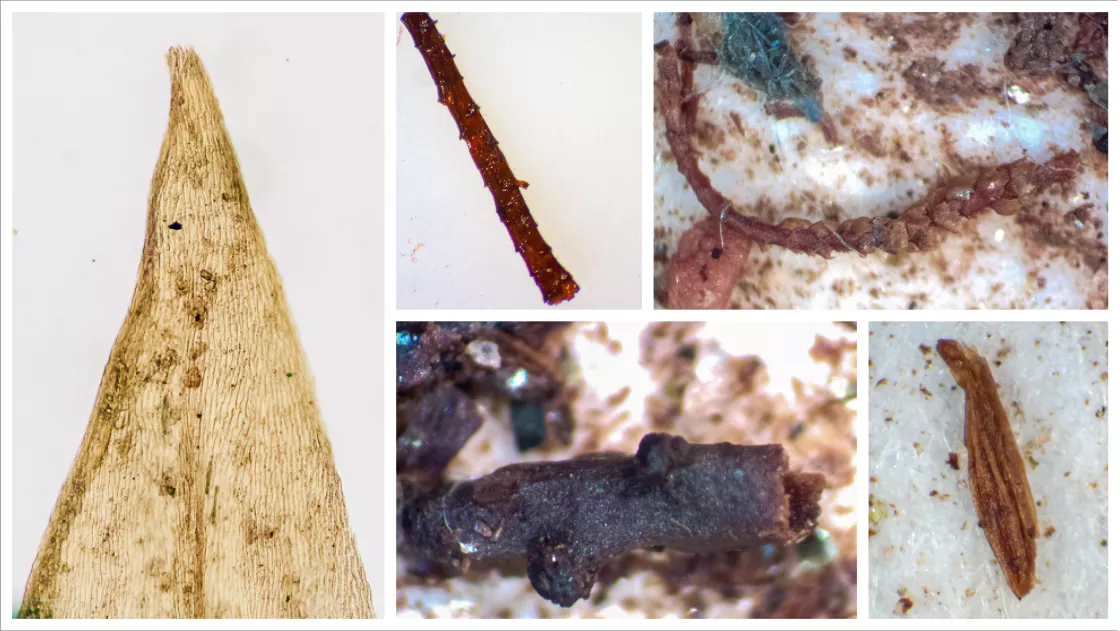By Agnieszka Gautier
An ice sheet, a continental-sized glacier, forms over thousands of years, as layers of snowfall build up, become denser, and transform into glacial ice. As the ice thickens, the pressure of the ice triggers movement, forming a flowing sheet of ice tens to thousands of meters thick and tens to thousands of kilometers across.
When glaciers and ice sheets flow over Earth, they bulldoze the surface free of anything that lies in their path. The force and weight of flowing ice scrapes up everything from trees and large boulders to the tiniest specks of soil, leaving little more than bedrock under an ice sheet. But the formation of the Greenland Ice Sheet was not typical.
Beneath the thickest parts of the ice sheet rests soil born 2.7 million years ago, before modern humans walked the Earth. Its presence hints at how the Greenland Ice Sheet formed and changed over thousands of years.
Getting to the core
Scientists can reconstruct past climates by drilling into the ice sheet and extracting thousands-meters-long cylindrical sections, called ice cores, to examine the ancient atmospheric gases and particles trapped in the core’s ice layers. But Paul Bierman, a geomorphologist at the University of Vermont, was interested in something else. In 2013, Bierman and his colleagues were scrutinizing the bottom few meters of a 3,000-meter-long (9,800-feet-long) core, which was pulled from a National Science Foundation (NSF) research base in Greenland called Summit Station.
The researchers wanted to see what was at the bottom of an ice core, expecting to find little more than bedrock under the ice sheet. That would suggest the typical bulldozer-like erosion over Greenland. Bierman was looking specifically for beryllium-10, an isotope of the element that forms when cosmic rays hit Earth’s surface. Since Greenland was covered by ice for significant portions of the past few million years, Bierman did not expect to find much of this element. He said, “We thought that the ice sheet had been erosive enough to remove any material that predated the ice on Greenland.”
Instead, he and his team were surprised to find plenty of it in the core samples. “We realized that, in fact, there was preservation of material from a long time ago,” Bierman said. That meant the massive ice sheet did not bulldoze the tundra off Greenland’s surface, but simply froze it in place. How does a thick, moving sheet of ice leave an ancient landscape intact?
Warm-based or cold-based ice
The answer lies in whether the base of the ice is warm or cold. A warm-based glacier or ice sheet will have liquid water at its base. Water and ice together are highly erosive, and the combination often scours landscapes. A cold-based ice sheet, however, will simply freeze to the bed, preserving whatever lies under the ice, even as the upper layers of ice flow over it.
“We know that the ice at Summit is frozen to the bed today,” Bierman said, “And we infer that it must have been frozen to the bed in the past, because if it weren’t, the ice would be quite erosive and would have long ago removed the soil material.” In addition to the element Bierman found, the base of the core samples also contained levels of carbon and nitrogen that indicate the presence of ancient Arctic or tundra soil underlying this portion of the Greenland Ice Sheet. None of these would exist had the ice been warm-based and scoured the landscape bare.
When Bierman found this ancient soil at Summit, it suggested that at least part of the ice sheet survived throughout the current ice age, which started about 2.6 million years ago. Bierman and his colleagues wanted to know if this was true for the rest of the island.
A very green Greenland
It would take a few years to analyze other core samples from Greenland’s coastal areas. In that time, Joerg Schaefer of Columbia University, published a study in 2016 showing that Greenland was largely ice free at least once over the last 2.7 million years and survived a series of more temperate interglacial periods during that time.
Schaefer’s team analyzed bedrock collected near Summit from the very bottom of an ice core hole. By measuring radioactive isotopes, Shaefer could estimate how long the bedrock was exposed at or near the surface and then buried by the ice sheet. When cosmic rays pummel Earth’s surface, they interact with the nucleus of surrounding atoms, expelling protons and neutrons from that atom and creating new particles. These so-called nuclides do not naturally occur in Greenland’s bedrock. And being radioactive, they act as nature’s clock, letting scientists infer how long the surface was ice free.
The results show that the Greenland Ice Sheet was ice free for at least 280,000 years, over the last 1.4 million years. Bierman and Schaefer’s studies do not necessarily contradict each other. The sediment below Summit was not fully eroded either during the ice sheet’s retreat or its return.
More unstable than previously thought
Bierman and his colleagues continued to investigate the base of ice cores from other parts of the ice sheet. In 2021, Andrew Christ, a post-doctoral fellow and Bierman’s colleague at the University of Vermont, published the discovery of fossilized plants in sediment from the bottom of an ice core collected in the 1960s. This 1.4 kilometer (0.9 mile)-thick ice core came from Camp Century, which sits 120 kilometers (75 miles) from the coast of northwestern Greenland and at a slightly lower elevation than Summit.
The sediment from the Camp Century ice core contained fossilized tundra plants, seemingly flash frozen in time, from at least two ice-free periods in the past million years. This time capsule of flourishing vegetation shows that the edges of the Greenland Ice Sheet melted when carbon dioxide levels were much lower than they are today—without the influence of human activity.
As Christ said, “Now we have two points—from Summit and Camp Century—where ice disappeared. For so much melt to occur, the ice sheet is showing greater sensitivity to natural climate variability than previously thought.” Christ added that for the ice to retreat to that degree, conditions needed to be relatively warm for a long time.
With anthropogenic climate warming and the long lifespan of gases like carbon dioxide and methane, global temperature will be higher for thousands of years. “It’s kind of already baked into our climate future,” said Christ.
And the data proves this point. For most of the twentieth century, the ice sheets made very little contribution to sea level and were nearly in balance in annual snowfall gain and ice or meltwater loss. However, the stability of the ice sheets has changed considerably in the twenty-first century. The most significant contributor to present-day sea level rise is melt from the Greenland Ice Sheet.
Modeling an ice-free future
All three studies point to significant melting during the Pleistocene Epoch. Earlier climate model simulations were incompatible with these findings, often presenting a continuously iced-over Greenland in that time period. Both Christ and Shaefer’s studies emphasize the need to consider that at least part of the Greenland Ice Sheet was gone for extended periods during the Pleistocene.
Depending on how much more greenhouse gases build up in our atmosphere, the Greenland Ice Sheet could completely melt in as few as a 1,000 years. Geologically speaking, that change is as fast as the beat of a hummingbird’s wings.
For a comprehensible timeline, sea level rise could increase 15 to 30 centimeters (6 to 12 inches) by 2100, with another 0.6 to 1.5 meters (2 to 5 feet) by 2200, redrawing coastlines worldwide and significantly restricting where future generations can live.
References
Aschwanden A., M. A. Fahnestock, M. Truffer, et al. 2019. Contribution of the Greenland Ice Sheet to sea level over the next millennium. Science Advances, Vol 5, Issue 6, doi:10.1126/sciadv.aav9396.
Bierman, P. R., L. B. Corbett, J. A. Graly, T. A. Neumann, A. Lini, B. T. Crosby, and D. H. Hood. 2014. Preservation of a preglacial landscape under the center of the Greenland Ice Sheet. Science 344, doi:10.1126/science.1249047.
Christ, A. J., P. R. Bierman, P. R., J. M. Schaefer, et al. 2021. A multimillion-year-old record of Greenland vegetation and glacial history preserved in sediment beneath 1.4 km of ice at Camp Century. Proceedings of the National Academy of Science (PNAS) Earth, Atmospheric, and Planetary Science. 118 (13) e2021442118, doi:10.1073/pnas.2021442118.
Schaefer, J., R. Finkel, G. Balco, et al. 2016. Greenland was nearly ice-free for extended periods during the Pleistocene. Nature 540, 252–255, doi:10.1038/nature20146.
